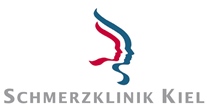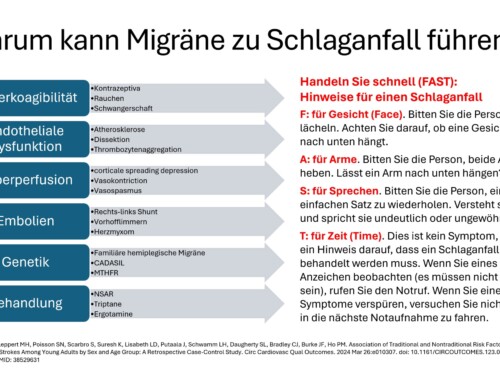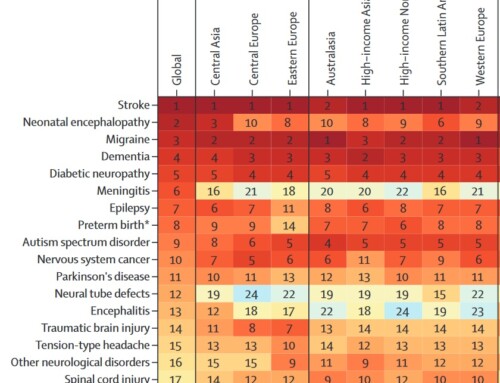Self-medicating migraine attacks with over-the-counter triptans
- Since April 2006, Naratriptan can be purchased from pharmacies without a prescription as Formigran® 2.5 mg in small packs of 2 tablets. Formigran® has the same active ingredients as Naramig®, which still requires a prescription. Both contain the active ingredient naratriptan in a dose of 2.5 mg.
- From May 2011, a second triptan, Dolortriptan®, will be available without a prescription in German pharmacies. Analogously, Dolortriptan® corresponds to the prescription Almogran® with the same active ingredient Almotriptan 12.5 mg.
The active ingredients are approved for the acute treatment of the headache phases of migraine attacks with and without aura. As with all approved triptans, the therapeutic effectiveness of Naratriptan and Almotriptan has been sufficiently proven. For self-medication, however, it must be ensured that the active ingredients are only taken when it is clear to the user that it is a migraine attack.
- The pharmacy staff must therefore know how migraines differ from other headaches in order to provide appropriate information during the consultation.
- To diagnose migraine, a careful medical examination is mandatory, otherwise the diagnosis cannot and must not be made.
- Epidemiological studies show that only around three out of ten affected patients know the characteristics of migraine. Triptans can also cause and maintain medication overuse headaches.
- They are by no means only effective for migraines, which is why the prescription-free nature was justified. Based on the effect, the supposed diagnosis must not be concluded “ex juvantibus”.
The only difference between the respective prescription and non-prescription versions of the same active ingredient is the number of tablets per pack at the same dose. Both Dolortriptan® and Formigran® contain 2 tablets each. Larger pack sizes come with a prescription requirement and a different name.
Since both Naramig® and Almogran® have been available in Germany for many years, the over-the-counter triptans are by no means outstanding innovations.
However, the fact that the Federal Institute for Drugs and Medical Devices (BfArM) was able to exempt the two triptans from prescription requirements means a fundamentally new assessment of the safety of these substances and ultimately of the entire class of triptans.
This is all the more astonishing when one recalls the history of the triptans' market launch. The parent substance of the class, sumatriptan (original trade name Imigran®), was unjustifiably criticized when it was brought onto the market due to alleged serious safety concerns. The undoubtedly good effect, which overshadowed all previously available therapy options in the treatment of acute migraine attacks, was offset by concerns about potentially serious side effects, especially possible circulatory disorders (heart attacks or strokes). The tightness in the chest and neck area, described by many patients as the most unpleasant side effect, seemed to confirm these fears in individual cases. The fact that the market launch of Imigran® in 1993 coincided with the start of drug budgeting by German statutory health insurance physicians made the acceptance of this substance even more difficult. However, from 1997 at the latest, with the introduction of the “2nd generation triptans”, zolmitriptan (AscoTop®), Naratriptan (Naramig®) and Rizatriptan (Maxalt®), the recognition of triptans as an effective, tolerable and safe group of substances could no longer be stopped. There are now 7 different triptans available in Germany, including Eletriptan (Relpax®), Almotriptan (Almogran®) and Frovatriptan (Allegro®).
All other triptans can also trigger the feelings of tightness in the chest and neck area described with sumatriptan. However, in practice only a minority of patients are affected. Even with sumatriptan, this side effect only occurs in a very small proportion of patients and usually disappears to a large extent if taken over a longer period of time. In addition, this side effect occurs particularly with sc injections, less often with the predominantly used tablets, nasal sprays or suppositories. If this tightness were actually the result of a narrowing of the coronary arteries (as was initially postulated), one would have expected that heart attacks would occur more frequently during the treatment. However, in the more than 20 years since the market launch of sumatriptan (and then the other triptans) there has been no substantiated evidence for this. Coronary angiographies have shown that the diameter of the coronary arteries does not change significantly at all after taking triptan, neither in people with healthy hearts nor in patients with proven coronary heart disease. In fact, it is now assumed that the tightness in the chest and neck area is the result of a cramping of smooth muscles in the esophagus and therefore, although unpleasant, is harmless!
Nevertheless, the rules of use from the first years of the introduction of sumatriptan still apply to all triptans: They must not be used if there are known or feared circulatory disorders of the head, heart or other organs, or if high blood pressure has not been treated or has been inadequately treated. With regard to the use of sumatriptan during pregnancy, a liberalization has begun due to increasing experience. There are strict indications for use during pregnancy. There is no sufficient experience with its use in humans during pregnancy. The animal experiment did not provide any evidence of embryotoxic/teratogenic effects.
The recommendations for using triptans when migraines occur are imprecise. The available studies show neither a shortening of aura by taking a triptan (Sumatriptan sc or Eletriptan), nor an increased occurrence of complications. However, since triptans, unlike coronary arteries, can probably constrict blood vessels in the head, their use is generally not recommended for more complex auras (e.g. familial hemiplegic migraines, brainstem auras, previously called basilar type migraines) or for typical auras only in the headache phase Migraine, ie after any aura has completely subsided.
If, after treating many millions of migraine attacks with triptans in the last 10 years, it has been recognized worldwide that triptans are not only effective but also largely safe compared to other migraine medications, the question arises as to why not all triptans are available without a prescription or why the pack sizes of Formigran® and Dolotriptan® were limited to 2 tablets. The main reason:
- Like ergotamine preparations in the past and painkillers today and especially mixed painkiller preparations containing caffeine, triptans are also able to trigger a drug-induced headache.
In practice, this manifests itself in a continuous increase in the frequency of migraine attacks once a limit of 10 days per month for taking triptans has been exceeded. The rule also applies to triptans that they should not be used more often than 10 days a month. The limitation of the pack size of both over-the-counter triptans takes this knowledge into account. Of course, it cannot be prevented that a patient who overuses medication buys several boxes of over-the-counter triptans over the Internet or in pharmacies. However, the small pack size (and the relatively high price) should easily be taken by those affected as an indication that the triptans should not be taken in large quantities. The pack size is essentially a warning sign from the Federal Institute for Drugs and Medical Devices (BfArM) behind over-the-counter triptans - similar to the limitation of over-the-counter paracetamol to a maximum of 10 g per pack.
The fact that not all triptans are yet available without a prescription is due to the fact that not all manufacturers have submitted an application to exempt their substance from the prescription requirement or this application has not been complied with (example: sumatriptan: in England this is available without a prescription in pharmacies; in Germany it was Release from prescription requirement not approved). The properties of the individual triptans and their ratings certainly play a role here. The triptans sometimes differ significantly in terms of their potency, speed of action and duration of action. However, tolerability is of essential importance when it comes to the question of whether a prescription is necessary. Naratriptan (Formigran®) and Almotriptan (Dolortriptan®) in particular are considered to have particularly few side effects, which makes them understandably predestined for prescription-free use.
If you compare Formigran® and Dolortriptan® with each other, both can be rated as equally well tolerated. According to study data, Dolortriptan® appears to be somewhat superior to Formigran® in terms of potency, whereas Formigran® has a longer duration of action. What both have in common is that they can still work even if painkillers were ineffective.
- Almogran® and Naramig® still require a prescription. They can also be prescribed in packs of 6 tablets or more for those insured by statutory health insurance.
- Formigran® and Dolortriptan® are available from pharmacies and are available in packs of 2 without a prescription at the pharmacy. These preparations are not reimbursed by the GKV.
Both over-the-counter triptans represent a significant improvement in the options for self-medicating migraine attacks. If the intake restrictions mentioned are observed, tolerability is generally very good. However, at the latest when triptan consumption comes dangerously close to exceeding the 10-20 rule (at least 6 or more days per month), a doctor should be consulted in order to prevent or treat the development of a triptan overuse headache.
An application for exemption from the prescription requirement was also made for 10 mg rizatriptan. This was rejected on July 5, 2011.
Authors: Dr. Axel Heinze, Prof. Dr. Hartmut Göbel










Thank you for this comprehensive description of triptans and their medication. I have never heard of this in any pharmacy so far in terms of its objectivity and scope.
Dear Doctor.
Heinze, Dear Prof. Dr. Göbel,
It's been more than 2 years since you wrote this migraine report,
but now it has only become acute for me because my adult daughter
is suffering more and more from migraine attacks.
But she doesn't want to take any medication for it. But now I can convince her
to take dolortriptan as soon as she is told if she has an attack with all the symptoms.
Thank you very much for your expert description!
Kind regards,
Rosemarie Koehler
Thank you very much for this comprehensive and detailed explanation on this topic. This article really leaves no questions unanswered!
Many greetings from the sunny south,
Bettina Frank